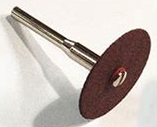To make sure I understand correctly, are you saying you installed grub-screws (‘studs’) into your aluminum terminal threads then tightened a nut holding down a busbar to 40 inch-lbs and it pulled out the grubscrew (along with the aluminum threads)?helicoils aren't expensive. And I bet one could be installed without even removing the cell from the battery.
I am fairly sure I pulled out another one today with 40 inch pounds. I stopped and screwed the stud in all the way then got it to hold 25 inch pounds. I'm so pissed. Lucky I have lots of cells to play with.
Less than 40 inch pounds isn't right for this purpose. If I can strip them with 40 then I guess I should try 30 and even that might strip one.
The Helicoil can self-tap into the M6 thread so you don’t need to do any drilling when installing a Helicoil?




